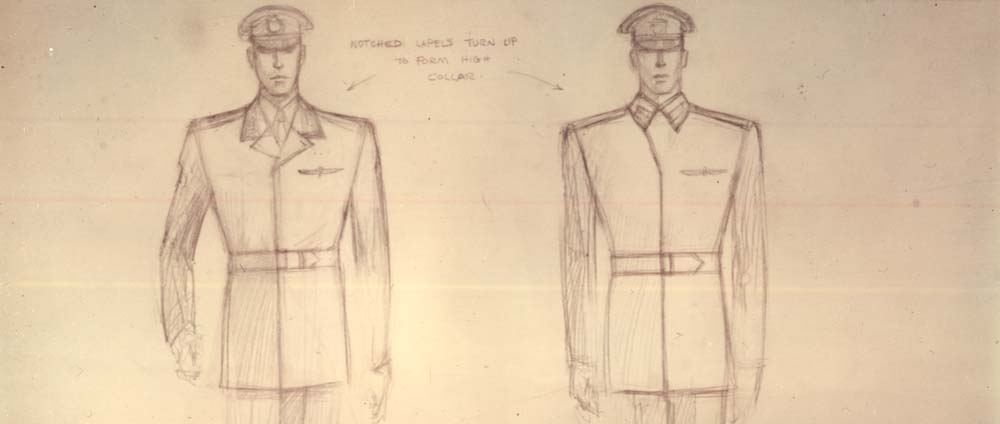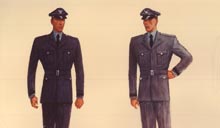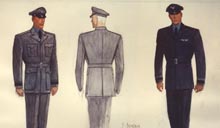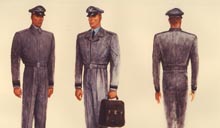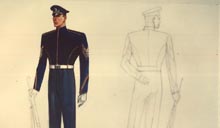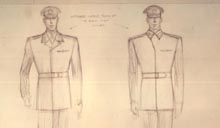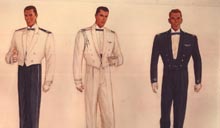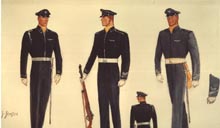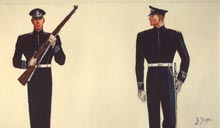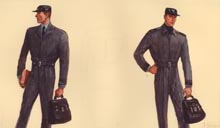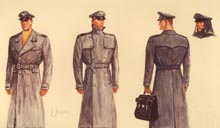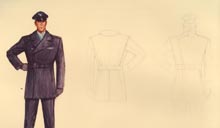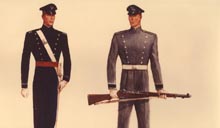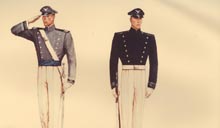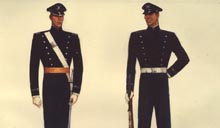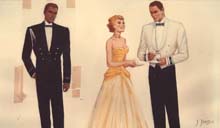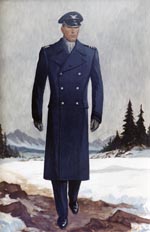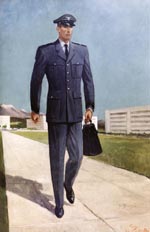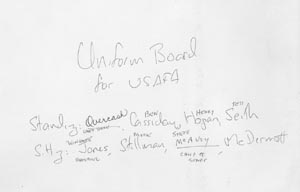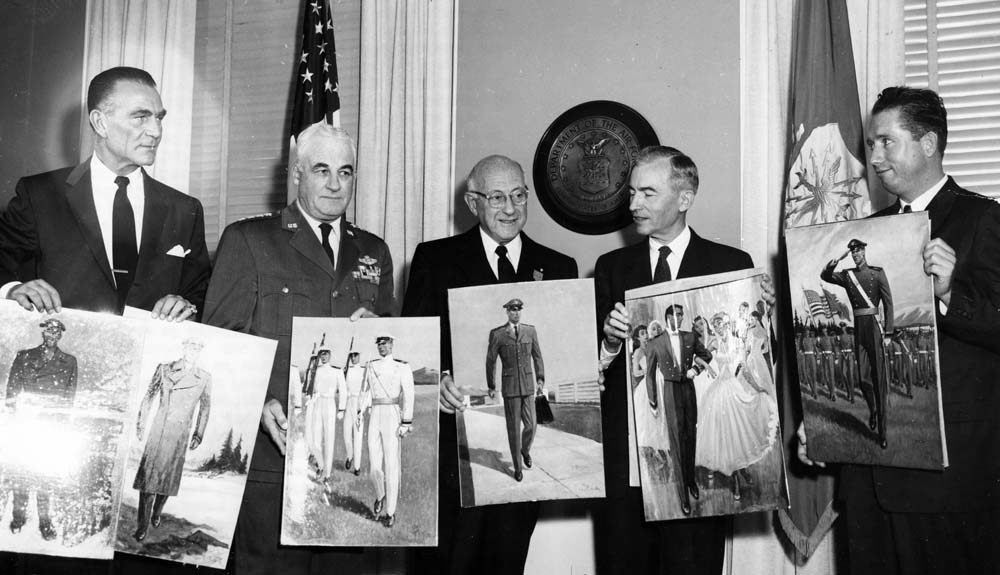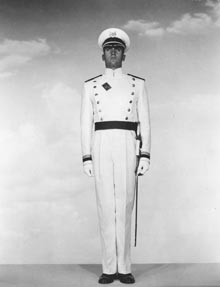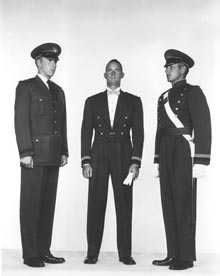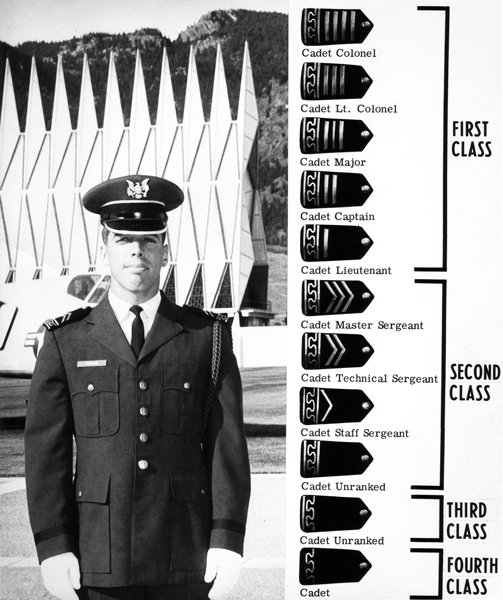The responsibility for the development of a distinctive wardrobe of uniforms for the Air Force Academy Cadets was delegated to the Air Force Academy by the Secretary of the Air Force.
From January 1951 to January 1955, various officers and persons within and outside the Air Force establishment made part-time efforts to develop a distinctive wardrobe of Air Force Academy uniforms. Many excellent ideas and designs resulted but none were selected.
On 31 January 1955, Secretary of the Air Force Talbott announced that Mr. Cecil B. DeMille, Paramount Studios, Inc., had consented to design a distinctive wardrobe of uniforms for the cadets. At the same time the Academy assigned a fully qualified textile engineer (Lt Col) and a civilian assistant to be put full time on the Cadet Uniform Project.
In late February 1955 interim uniforms were adopted for the first class of cadets. The “interim” uniforms had distinctive shoulder boards, silver braid cap, silver sleeve braid, with narrow black soutache, and the former Aviation cadet wing and propeller cap insignia. With the interim uniform resolved, all effort was directed to the preparation of a comprehensive and fully integrated plan for the development of a distinctive wardrobe of Air Force Cadet uniforms. The uniform board was established by Letter Order M-1226 dated 4 October 1952.
The Uniform Board immediately established recommended criteria for each item of the proposed wardrobe, which was furnished to Mr. DeMille to be used as a point of departure by his designers. First sketches from Mr. DeMille were forwarded to the Academy in February of 1956 and on 6 June 1956, a contract was negotiated with Western Costume Company, Hollywood, California, for the manufacture of uniform prototypes which were subsequently presented to the Academy Superintendent on 8 August 1956. The Superintendent approved generally all elements of the wardrobe, which were ultimately approved by HQ USAF.

